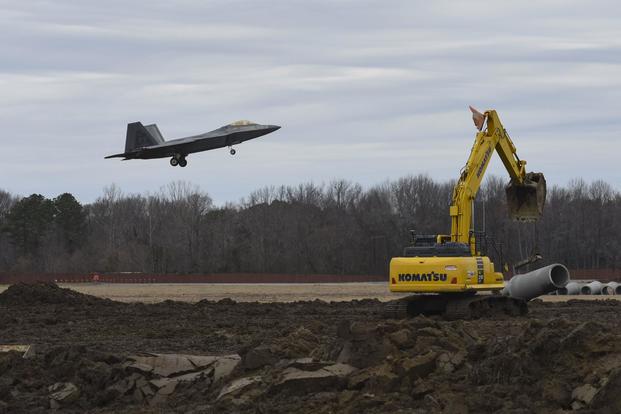The Air Force has unveiled a new plan to update bases with eroded infrastructure or those that haven't received modernization improvements in the last 20 years.
Dubbed the Air Force infrastructure investment strategy, the Air Force will begin putting money toward the effort starting next fiscal year, if the plan is approved by Congress.
The fiscal 2020 budget plan includes a request for $4.11 billion to invest in facility sustainment, restoration and modernization, a $1.3 billion increase from last year's request.
"Without investments that assure lethality, restore readiness, properly fund and train personnel, and deliver cost effective adaptive infrastructure, we will rapidly lose our power projection advantage," according to the document, released Monday.
Plans for improvements include infrastructure hardening and improved energy resources allocated toward the service's permanent and expeditionary installations.
As operational priorities arose, various infrastructure investments were deferred across 180 of the Air Force's bases. The Air Force estimates deferred maintenance costs to base construction and recapitalization have risen to $33 billion, with the deficit expected to triple over the next 30 years if the service doesn't begin to improve immediately, the strategy said.
"This resource profile creates readiness and lethality risks due to continued and increasingly rapid degradation of infrastructure. Failures in infrastructure can have a direct impact by significantly disrupting mission generation capabilities and rendering the Air Force incapable of delivering organic support to airmen and their families," the strategy noted.
That said, base housing is not included in the proposed upgrades, Air Force spokeswoman Ann Stefanek told Military.com on Tuesday.
If the funding -- which falls under operations and maintenance, not military construction -- is approved, the service will start by prioritizing which bases need upgrades most and will use data analysis and technology to establish better business models to run each facility.
The Air Force also hopes to consolidate and downsize.
Bases can optimize their resources through use and reuse of existing facilities, and "offset new construction growth, and divest failing and underutilized facilities," the document stated. "The goal is to create enduring plans for the installations we need while reducing total facility square footage by 5 percent in 20 years through divestment, demolition, conversion, and consolidation."
Investing more up front will allow the Air Force to save later on, the strategy said. For example, by implementing "state-of-the-art building monitoring systems, predictive condition-based facility maintenance technologies, and artificial intelligence," from the start, the Air Force can better monitor when something may break or need fixing.
The overall goal is to "improve infrastructure readiness while reducing the cost of facilities maintenance," while working to reach "a facility mission capable rate of 90 percent or higher for critical infrastructure," it said.
Richard Hartley, Air Force principal deputy assistant secretary for installations, environment and energy, told Federal News Network on Monday the service is looking to increase its funding toward the effort each year by at least two percent.
That translates into roughly $1 billion each year, Federal News Network said.
-- Oriana Pawlyk can be reached at oriana.pawlyk@military.com. Follow her on Twitter at @Oriana0214.










